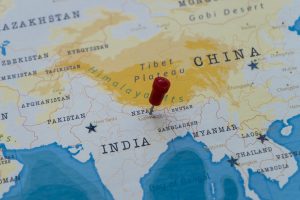The call for a directly elected head of government in Nepal carries both the hope of renewal and the perils of overreach. At the center of this debate is Balen Shah, the swashbuckling mayor of Kathmandu.
Following the Gen Z protests on September 8 and 9 that led to the overthrow of the K.P. Sharma Oli government, Shah had declined the young protesters’ offer to be the interim prime minister. Instead, he reportedly wants to lead a full-term post-election government as a directly elected executive head.
The offer of the interim government head was then passed on to former Chief Justice Sushila Karki, who accepted it. The Karki government, formed with the singular mandate of holding nationwide elections on March 5, 2026, has clarified that changing the current system of parliamentary democracy is beyond its remit.
If such a change is to be made, it will have to be done by the new parliament elected next year. (The old one was dissolved following the Gen Z revolt.)
After long and widespread abuse of the parliamentary system by the old political class, sizable sections of Gen Z representatives and civil society are in favor of a directly elected prime minister or president.
The question is: how do we get there?
Proponents of a directly elected executive head argue that chopping and changing governments every six months or so — as has been happening in Nepal over the past three-and-a-half decades under the parliamentary system — creates political instability, hampers national development, promotes horse-trading and boosts nepotism and corruption. To its backers, direct election is not just about efficiency but also accountability.
And when the supporters of the system envision a strong executive head, they have someone like the 35-year-old Shah in mind: young, clean and ambitious.
They point to how the new Karki government was formed based on the doctrine of necessity; otherwise, there is no constitutional provision for a non-parliamentarian becoming prime minister. The parliament was also unconstitutionally dissolved. “What is the harm in tweaking the constitution one more time to adjust a directly elected executive?” they ask.
But another section of Gen Z leaders and most constitutional experts advise caution. They say the constitution has already been harmed. If any more liberties are taken with the charter, it will be as good as dead. A largely accommodative and inclusive constitution that was written by people’s representatives over eight years — and at a considerable expense — cannot be ditched less than a decade after its promulgation.
Rather, they argue that only a freshly elected parliament will have the legitimacy to make such a foundational change.
It is true that there has not been enough debate on the suitability of direct elections for Nepal. The system’s popularity is also untested.
The safest and most legitimate option would be for the advocates of a directly elected executive to go into the next elections with this on their agenda. If they get enough support, they can then change the charter to their liking.
Separately, the Gen Z uprising was spontaneous and mostly the result of people’s growing frustrations with the old political elite. So even though all kinds of conspiracy theories are being bandied about on the involvement of outside powers in the uprising, there is little evidence to back such claims.
But for a country that is precariously wedged between India and China, geopolitics will invariably play a part in the post-Gen Z movement settlement, including while determining Nepal’s future form of government.
China has always wanted a strong and stable government in Kathmandu. When Nepal was a monarchy, Beijing maintained close relations with the king, who was a constant presence even as prime ministers kept coming and going. Since the monarchy’s fall in 2008, Beijing has been searching for another powerful, stable power center in Kathmandu.
Notably, during the constitution-writing process, the most vocal advocates of a directly elected executive head were the Communist Party of Nepal-United Marxist Leninist (CPN-UML) and the CPN-Maoist Center, Nepal’s two biggest communist parties that have traditionally maintained close relations with the Chinese Communist Party. At one point, Beijing even facilitated the merger (now undone) of these Nepali communist parties.
India, meanwhile, prefers a parliamentary system in Nepal, partly because of its own familiarity with it, but also because the parliamentary system gives it space to maneuver in Kathmandu. While writing the constitution, the Nepali Congress, the party that has historically had warm relations with New Delhi, had made a strong pitch for a parliamentary system, arguing that a directly elected head could turn into an “elected autocrat.”
Again, as things stand, there is no way to hold elections for a directly elected executive without doing serious damage to the constitution — and risking all the progressive changes made in the wake of the 2006 people’s uprising. These include greater representation of women and marginalized communities in government and state organs, devolution of power to the grassroots, and vesting complete sovereignty on the people.
Nepal’s Gen Z revolt has rekindled the dream of renewal. But without patience and foresight, the country could stumble from the current crisis into an even bigger one — which outside actors will be only too eager to exploit.




























